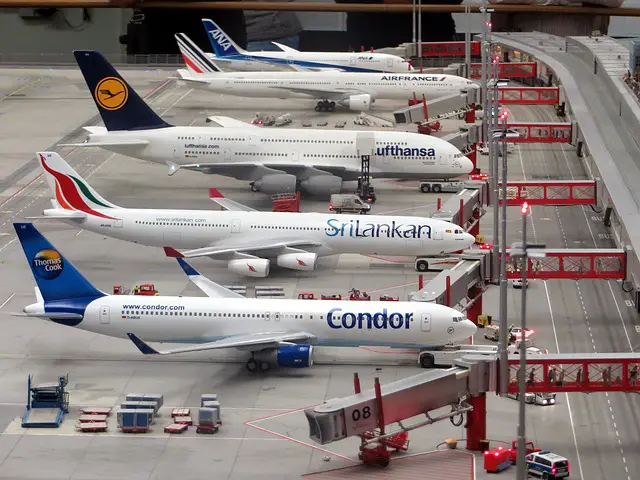Airlines today are constantly navigating through a turbulent atmosphere of evolving risks and challenges. From fluctuating fuel prices and economic uncertainties to the pressing need for fleet modernisation and environmental compliance, the contemporary aviation industry demands agility and financial acumen. These pressures highlight the critical decisions airline companies must make regarding their most significant assets: their aircraft.
Over the years, aircraft leasing has emerged as a strategic solution that offers airline companies the opportunity to become more efficient and financially flexible. Opting to lease rather than purchase aircraft outright can help carriers better manage capital expenditure, adapt to changing market demands, and ensure their fleets remain technologically advanced and fuel-efficient. This approach goes a long way toward mitigating financial risks, while also boosting airlines’ competitive edge and capacity to respond efficiently to customer needs.

This short guide aims to explore why leasing has become a preferred strategy for carriers worldwide and how exactly it keeps them aloft in an ever-changing industry. Let’s begin.
How Does Aircraft Leasing Work?
The process of aircraft leasing begins with the decision-making phase where airline companies assess their fleet requirements based on route expansions, passenger demand, and financial considerations. This phase helps the airline determine the type and number of aircraft needed. Going forward from there, they can develop a leasing arrangement that best suits the airline’s operational strategy and financial health.
Once the requirements are established, airlines enter into negotiations with leasing companies. These parties may discuss terms that include lease duration, payment schedules, and maintenance responsibilities. Leases can last from a few months to several years, depending on the agreement. At the end of the lease, the airline company may return the aircraft or extend the lease. In some agreements, the airline may also opt to purchase the aircraft.
What Are the Different Types of Aircraft Lease?
There are two principal types of aircraft leases: the dry lease and the wet lease. A dry lease is a more traditional form of leasing, where the leasing company provides the aircraft without any additional services. The airline company is responsible for crewing, maintaining, and insuring the aircraft. This type of lease offers airlines greater operational control but also places the burden of regulatory compliance and maintenance squarely on their shoulders.
In contrast, a wet lease includes the aircraft along with a complete operational package—crew, maintenance, and insurance. Wet leases are particularly useful for airline companies looking to quickly increase capacity without having to manage the complexities of crew training and aircraft maintenance. They can also help with covering operational gaps due to maintenance or unforeseen circumstances.
The choice between dry and wet leasing depends on an airline company’s specific needs, strategic goals, and operational capabilities. Dry leases tend to be longer-term commitments and offer airlines the chance to integrate the aircraft more fully into their fleet so that it reflects their livery and branding. Wet leases, on the other hand, are typically short-term solutions that afford flexibility and immediate operational capacity with minimal commitment. No matter which one is chosen, these leasing arrangements ultimately help airline companies stay ahead of any financial and operational challenges, meet consumer demands, and achieve strategic objectives.
How Does Aircraft Leasing Benefit Airline Companies?
Financial Flexibility
Airlines require a lot of financial flexibility, particularly for managing cash flow and allocating resources to other strategic areas, such as route development or customer service enhancements. Aircraft leasing offers significant economic advantages by reducing the hefty initial outlays associated with purchasing aircraft. Leasing also enables airlines to avoid the depreciation and resale risks of owned aircraft. Overall, the capital-intensive nature of modern aviation makes leasing a financially prudent choice.
Fleet Adaptability
Adaptability is vital for maintaining competitiveness in the modern aviation sector, and leasing empowers airlines with the ability to swiftly adjust their fleet size and composition in response to fluctuating market demands. Freed from the long-term financial commitments of purchasing aircrafts, they gain the agility to scale operations up or down as necessary. Leasing also allows airlines to explore new routes and markets with minimal risk.
Access to Modern Aircraft
Through leasing, airline companies can more readily access modern, fuel-efficient aircraft, which are crucial for reducing operational costs and meeting increasingly stringent environmental regulations. It helps airlines maintain a young and technologically advanced fleet, which, in turn, affords its own advantages; among them, enhanced fuel efficiency, reduced maintenance costs, and greater appeal to environmentally conscious passengers.
Risk Mitigation
Leasing helps address various risks, including those associated with aircraft obsolescence, maintenance, and market fluctuations. By transferring the burden of maintenance and the risk of depreciation to lessors, airline companies can focus on their core operations and strategic growth. This risk mitigation factor is particularly beneficial for airlines navigating uncertain markets, as it provides a buffer against the inherent volatility of the aviation sector.
In conclusion, aircraft leasing serves as a strategic lever for airlines that enables them to weather the challenges of today’s aviation landscape with more confidence and less risk exposure. Embracing leasing is one of the best ways for airlines to keep their fleets competitive, efficient, and aligned with both market demands and environmental considerations. Over the long term, smart leasing practices position airlines for sustainable growth and success in the global aviation arena.